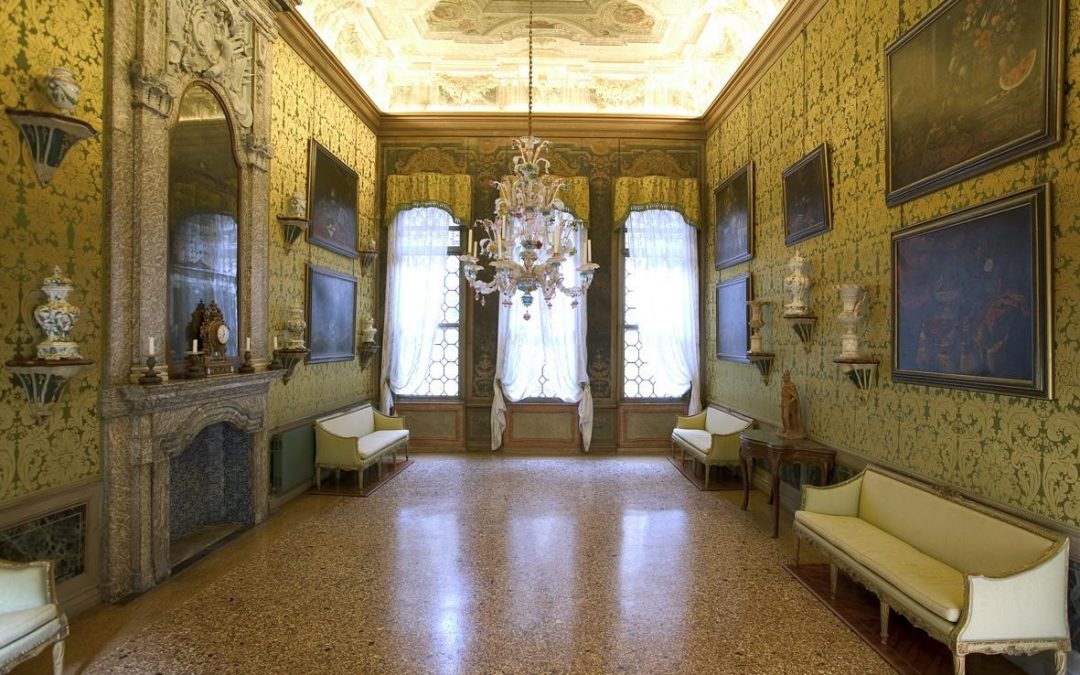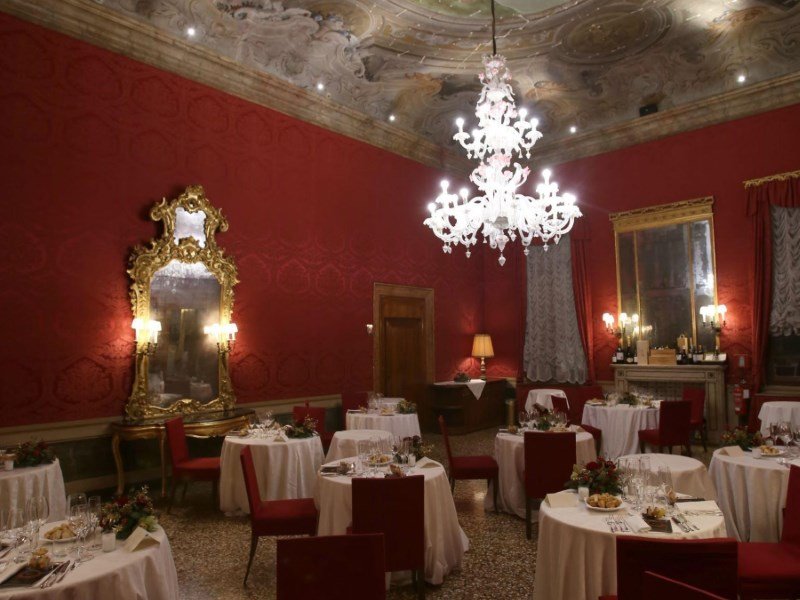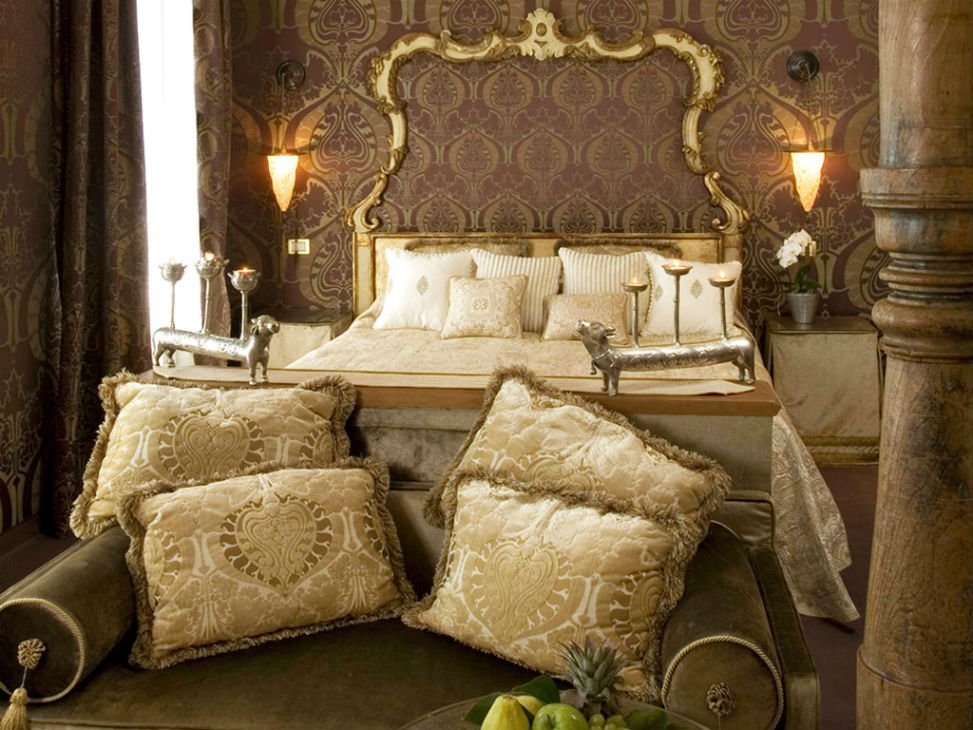Tessitura Bevilacqua has its roots in the history of Venice and is closely linked to it. In its DNA there are the traditions of an ancient art, the mastery handed down by the weaving craftsmen, the heritage of the decorative motifs that come from a long journey through time among cultures and places of every part of the world. With its velvets, brocades, damasks, soprarizzo, they have entered the most beautiful churches and palaces in Venice and have become part of the life of those who have lived or just visited those places. Thus, a lasting link has been created with the city and its history. We present three of the most prestigious buildings that have been adorned with the Bevilacqua fabrics.
Lavish receptions at Palazzo Pisani Moretta
What strikes at first glance of this splendid 15th century building overlooking the Grand Canal is the elegant façade with sinuous windows in flowery Gothic style. But it’s especially at night, during occasions of luxurious receptions, that it expresses its charm to the fullest. Precious Murano glass chandeliers illuminate this sumptuous dwelling that rises from the water. Works by famous artists including Giambattista Tiepolo, together with precious Bevilacqua fabrics, adorn the magnificent baroque salons that over time have enchanted the illustrious personalities housed in the palace. These evocative atmospheres take you back in time, to the receptions of the Pisani family, when the wealthy guests were walking along the majestic double ramp staircase that led them to the party hall which has hosted, in more recent times, the Ballo del Doge, one of the most exclusive events of the Venice Carnival.
Ca ‘Vendramin Calergi, the Venice Casino
Ca ‘Vendramin Calergi, one of the most grandiose palaces of the Golden Age of the Serenissima, is mostly synonymous with gambling as it now hosts the Casino of Venice since 1948. A renaissance style stately home, it overlooks the Grand Canal. It was commissioned by Andrea Loredan for his family and its construction began in 1481. It’s in the luxury that characterizes its rooms that the Bevilacqua fabrics find natural placement together with fine furniture, antique mirrors and once also with frescoes by Giorgione. The Red Room, which now houses the Wagner restaurant, is covered with a magnificent Bevilacqua crimson silk damask. The name is a tribute to the great German composer Richard Wagner, who lived here from 1882 until his death in 1883.
Hotel Metropole, the 1700s in Venice
This 5-star deluxe hotel has a stunning view of the island of San Giorgio and it’s just a stone’s throw from Piazza San Marco. The furnishings of this 18th century building have been chosen with originality and refinement to recreate the charm of that era in its rooms. Tessitura Bevilacqua has contributed with its velvets and silk damasks, giving great importance to the function of furnishing fabrics typical of the 1700s and reproducing the typical ornamental motifs of that time. A magical place where every detail gives life to a unique and timeless ambiance that has attracted distinguished guests including Antonio Vivaldi, Sigmund Freud and Thomas Mann.




